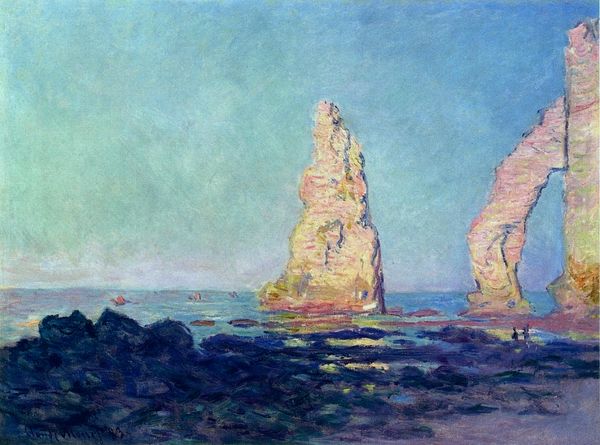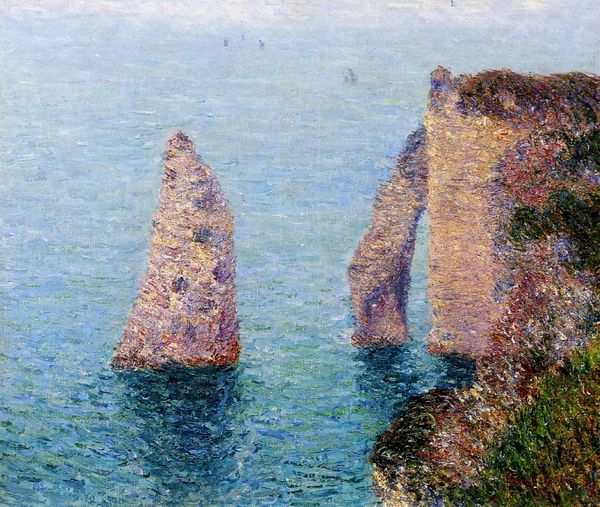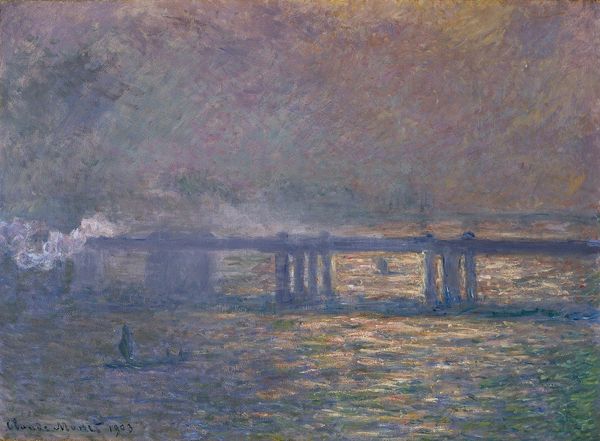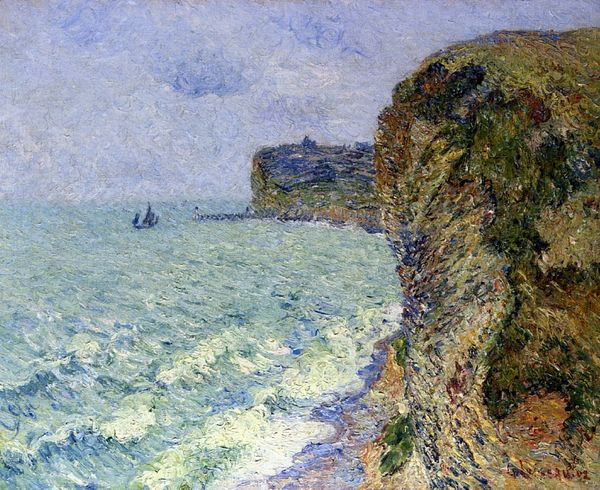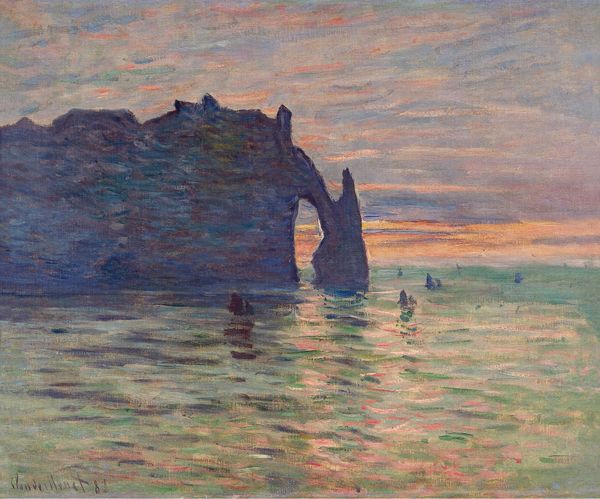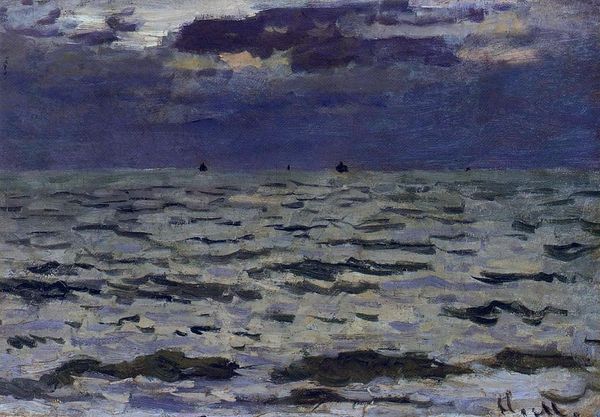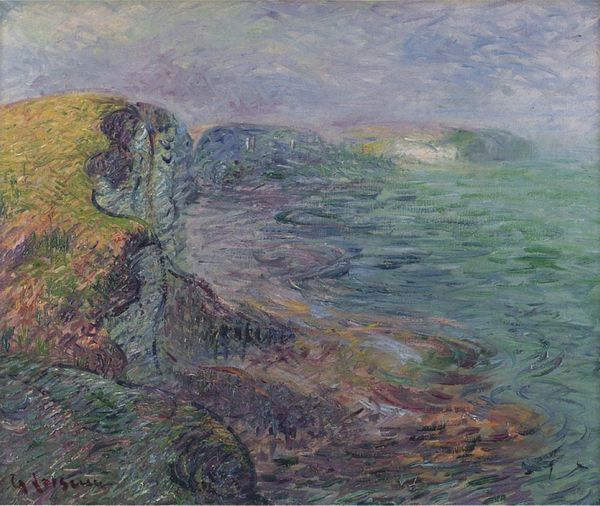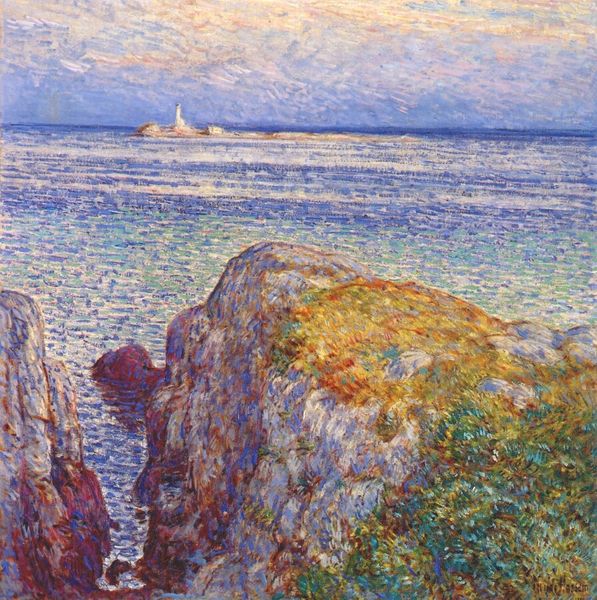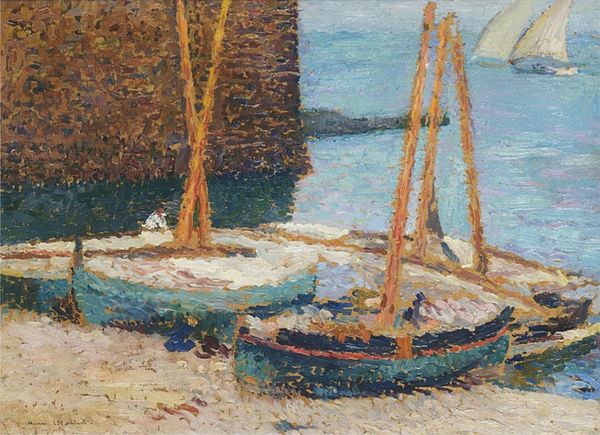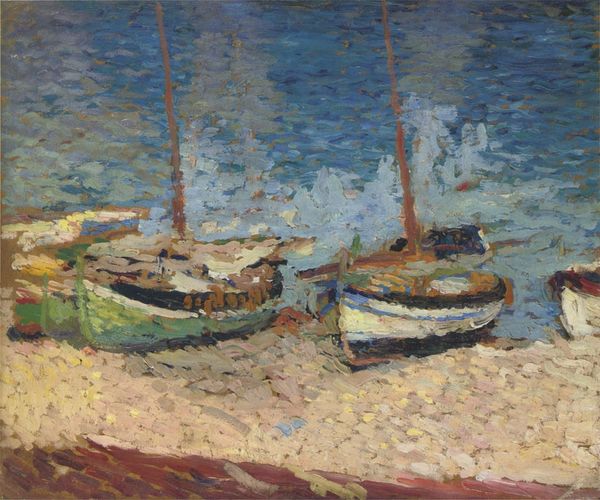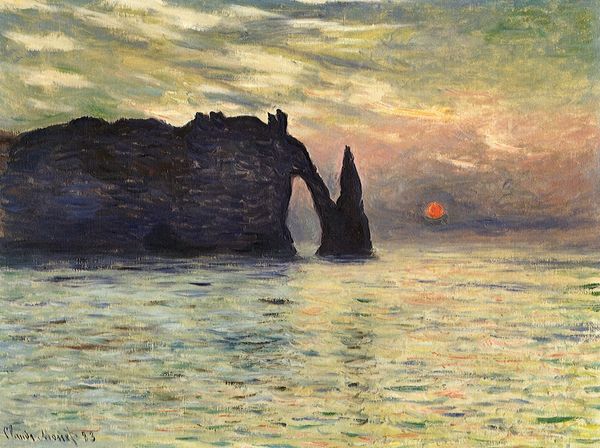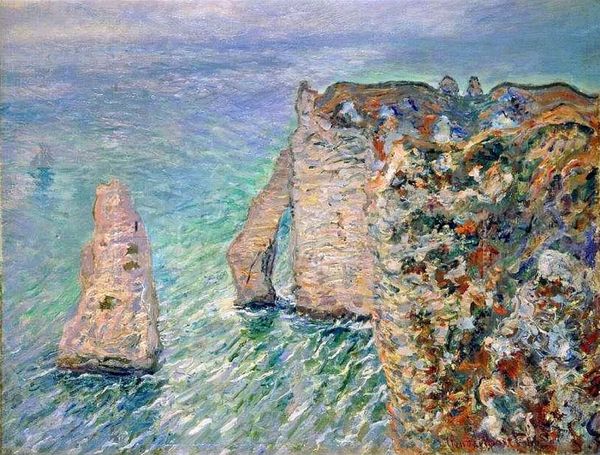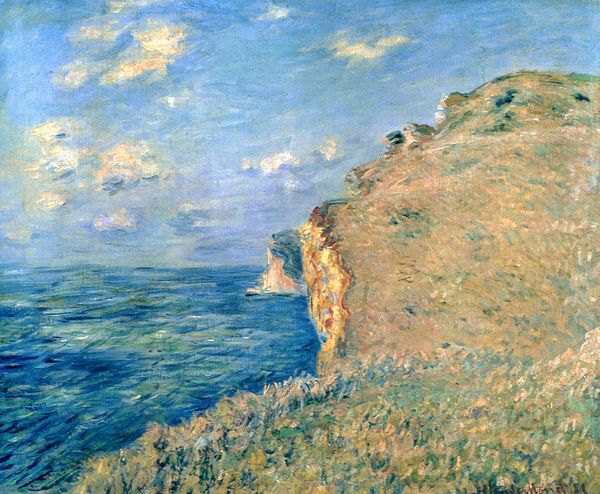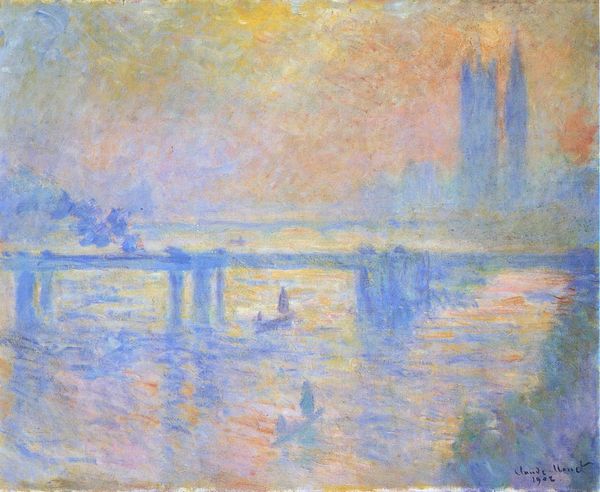
painting, plein-air, oil-paint, impasto
#
cliff
#
rough brush stroke
#
painting
#
impressionism
#
plein-air
#
oil-paint
#
fluid brush stroke
#
landscape
#
impressionist landscape
#
impasto
#
rock
#
cityscape
#
post-impressionism
#
realism
Copyright: Public domain
Claude Monet painted this seascape of Étretat with oil on canvas. Monet, like many Impressionists, was interested in the sensory qualities of a place. Here, he used fluid brushstrokes to capture the textural variations of the water and cliffs. Oil paint, traditionally favored by fine artists, allowed Monet to capture the fleeting effects of light and atmosphere. His technique involved layering colors to create a sense of depth and luminosity. The canvas support also played a role, its weave subtly influencing the final appearance. The materiality of paint here is important. It's a manufactured substance, made of pigment and binder. Think of the social infrastructure needed to make the paint itself, and the economic context needed to support the artist. Monet’s paintings were luxury objects, made for a market hungry for beautiful images. Ultimately, the scene itself and Monet’s artistic production were tied to social and economic systems of his time.
Comments
No comments
Be the first to comment and join the conversation on the ultimate creative platform.
